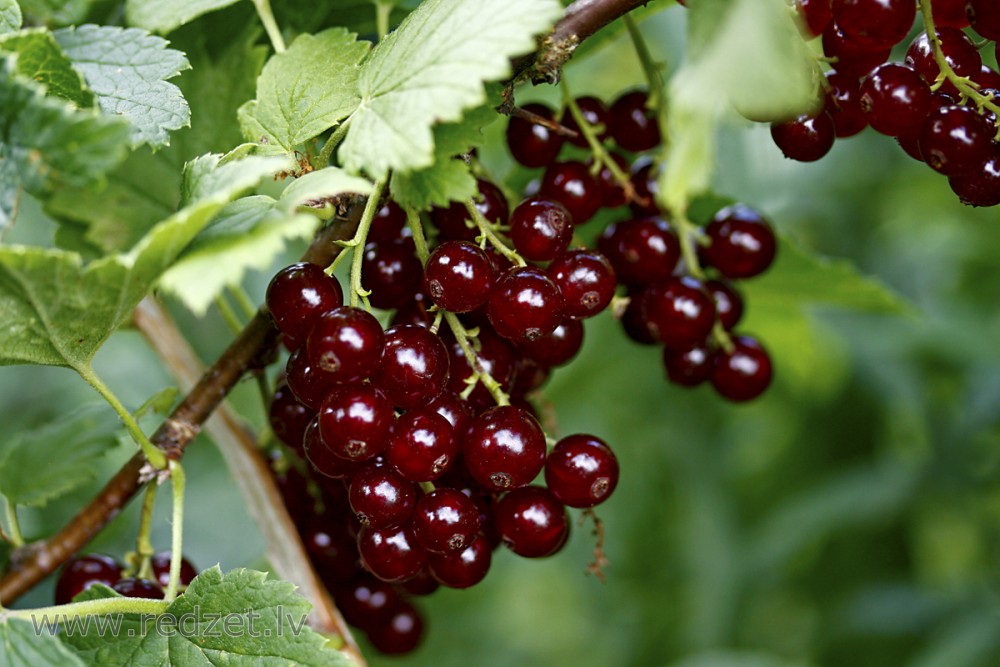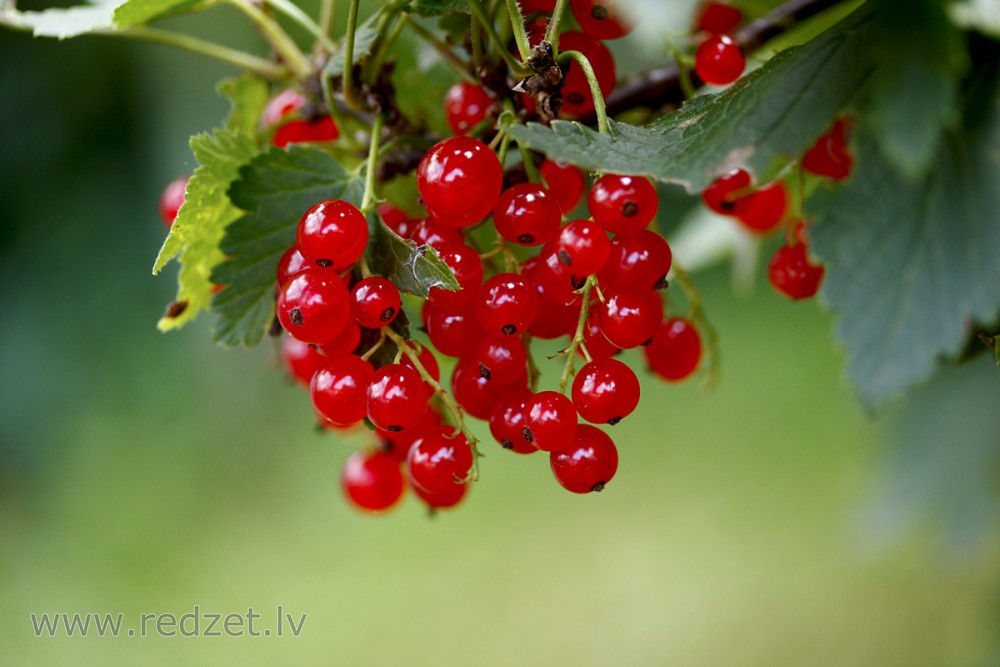Ribes rubrum (redcurrant)
The redcurrant, or red currant (Ribes rubrum) is a member of the genus Ribes in the gooseberry family. It is native across Europe. The species is widely cultivated and has escaped into the wild in many regions.
Ribes rubrum is a deciduous shrub normally growing to 1–1.5 metres (3–5 ft) tall, occasionally 2 m (7 ft), with five-lobed leaves arranged spirally on the stems. The flowers are inconspicuous yellow-green, in pendulous 4–8 cm (1 1⁄2–3 1⁄4 in) racemes, maturing into bright red translucent edible berries about 8–12 mm (0.31–0.47 in) diameter, with 3–10 berries on each raceme. An established bush can produce 3–4 kg (7–9 lb) of berries from mid to late summer.
Cultivation
There are several other similar species native in Europe, Asia and North America, also with edible fruit. These include Ribes spicatum (northern Europe and northern Asia), Ribes alpinum(northern Europe), R. schlechtendalii (northeast Europe), R. multiflorum (southeast Europe), R. petraeum (southwest Europe) and R. triste (North America; Newfoundland to Alaska and southward in mountains).
While Ribes rubrum and R. nigrum are native to northern and eastern Europe, large berried cultivars of the redcurrant were first produced in Belgium and northern France in the 17th century. In modern times, numerous cultivars have been selected; some of these have escaped gardens and can be found in the wild across Europe and extending into Asia.
The white currant is also a cultivar of Ribes rubrum. Although it is a sweeter and albino variant of the redcurrant, not a separate botanical species, it is sometimes marketed with names such as Ribes sativum or Ribes silvestre, or sold as a different fruit.
Nutrition and phytochemicals
In a 100 gram serving, redcurrants (or white) supply 56 calories and are a rich source of vitamin C, providing 49% of the Daily Value (DV, table). Vitamin K is the only other essential nutrient in significant content at 10% of DV (table).
Phytochemicals
Redcurrant fruits are known for their tart flavor, a characteristic provided by a relatively high content of organic acids and mixed polyphenols. As many as 65 different phenolic compounds may contribute to the astringent properties of redcurrants, with these contents increasing during the last month of ripening. Twenty-five individual polyphenols and other nitrogen-containing phytochemicals in redcurrant juice have been isolated specifically with the astringent flavor profile sensed in the human tongue.
en.wikipedia.org
https://en.wikipedia.org/wiki/Redcurrant
Continue reading






